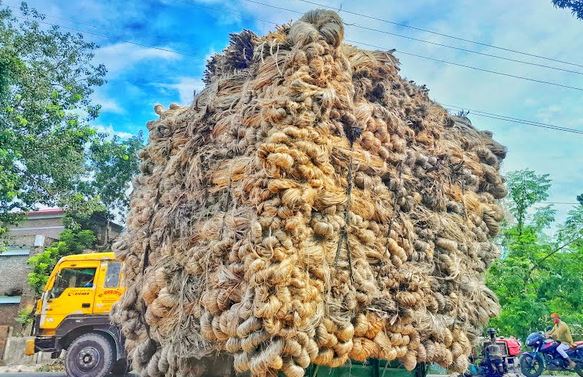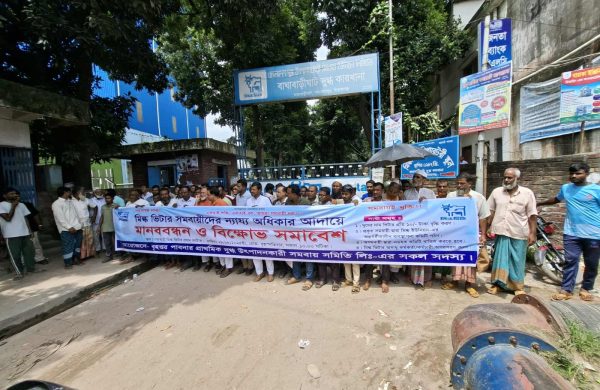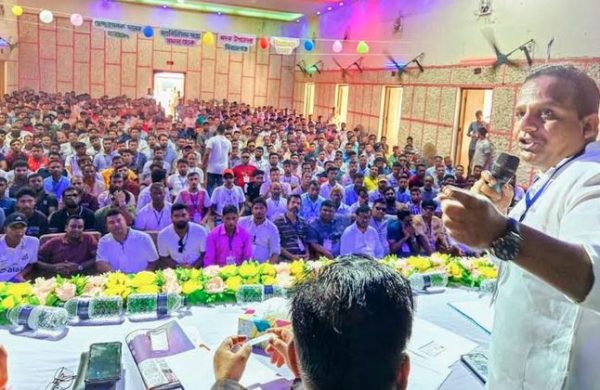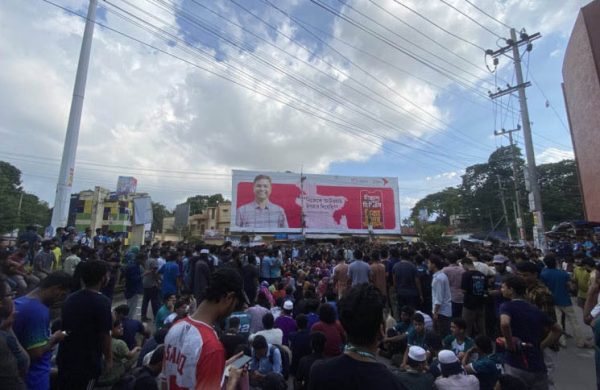Jute prices surge at season start, boosting farmers’ hopes
- Update Time : Thursday, August 28, 2025

Lalmonirhat Correspondent:
The new jute of the season has begun arriving in local markets and its soaring price has raised hopes among farmers across the district.
After a long gap, the high yield and favorable market price of the golden fiber have brought smiles to the faces of cultivators.
Union-level markets in Sadar, Aditmari, Hatibandha and Kaliganj upazilas have seen better purchase and supply this year compared to the previous season.
Local farmers said that this year’s jute yield has been as expected. In most areas, the color of the fiber has become bright and attractive due to the opportunity to wake the jute in halo machines or clean rainwater.
As a result, they are able to sell jute at a good price in the market. Farmers hope that if this continues, the lost jute tradition will return.
According to Department of Agriculture Extension (DAE) jute was cultivated on 3,315 hectares of land in the district this year.
Favorable weather and timely cultivation have resulted in an average yield of 9 to 11 maunds per bigha.
Last year, jute was sold at Taka 2,200 to Taka 2,400 per maund. This time, jute is being sold at Taka 3,500 to Taka 3,800 per maund at the beginning of the season.
Akkas Ali, a jute trader from the district headquarters, told BSS, “Last year, at the beginning of the season, we bought jute at Taka 2,200 to Taka 2,400 per maund. At the end of the season, the price stood at Taka 3,500 to Taka 4,000. But this time, at the beginning of the season, we have to buy it at Taka 3,500 to Taka 3,800.”
Another trader, Nazrul Islam Manik, who supplies 5,000 to 10,000 maunds of jute annually to factories in Khulna-Bagerhat, said, “Farmers are making comparatively more profit this year. If prices remain stable, their interest in jute cultivation will rise further.”
However, farmers complain that they are spending an additional Taka 300 to 500 per maund due to the increase in the cost of pesticides, irrigation, water for weeding, shallow machines and labor wages.
Alamgir Hossain, a farmer from Mahendranagar union, said, “Cultivating one bigha of jute costs around Taka 10,000 to 12,000. Considering all expenses, farmers are not always getting a fair price, while traders earn more once the jute reaches the market.”
Abdur Rahman, a farmer from Aditmari upazila, added, “The yield is good, and the price is satisfactory. But there is uncertainty about how long this price will last.”
Agriculture Officer Khandaker Sohael Ahmed said, “Both the yield and price are good because the weather is favorable. Farmers are earning an average of Taka 1,000 per maund.”
However, the real situation will be understood when the full supply reaches the market, he said.
Deputy Director of DAE Dr. Md. Saikhul Arifin said the demand for jute in the world market has increased due to the ban on polythene. As a result, farmers are in a profitable position this year. At the current market price, they are making an average profit of more than Taka 1,200 per maund.
However, as the market supply is not yet fully normalized, the real situation will become evident after three to four weeks.















